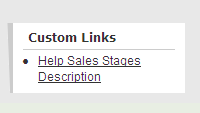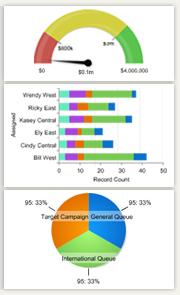Cloudforce London 2010 – 8th September 2010 at Royal Festival Hall
During Cloudforce London 2010 I attended Marc Benioff’s keynote session where the theme was “Chatter”. Benioff was saying how he wished all enterprise software could be more like Facebook – it seems salesforce is positioning Chatter as some kind of “Facebook for the enterprise”. He also announced Chatter Mobile which is supported on iPhone, iPad and BlackBerry (and later Android) and some of the demos below were done using these mobile devices.
 Chatter allows salesforce.com users to track data as well as people within their organisation – users can monitor information flow, for example open support cases, opportunity updates, price list changes as well as updated documents such as slide decks, account plans etc.
Chatter allows salesforce.com users to track data as well as people within their organisation – users can monitor information flow, for example open support cases, opportunity updates, price list changes as well as updated documents such as slide decks, account plans etc.
Benioff said that he regularly taps into various information flows and uses it as an early warning sign and indicator of good performance or areas of concern. A demo was given showing quick and easy real-time communication and collaboration and was compared to current enterprise collaboration, which rely heavily on email, embedded files and/or web links. Benioff said that it had reduced email usage, claiming a reduction of 40% within salesforce and also claimed that it has improved structured file sharing and versioning far better than say SharePoint.
Benioff went on to say that outside an organisation, when trying to find information about a product or solve a problem, today, most often people use google, twitter, facebook etc instead of contacting a company directly. There was a demo showing how Chatter can also now monitor conversations happening in the outside world so that salesforce users who need to see what people are saying outside the organisation can do that alongside their internal Chatter conversations. A demo showed a twitter poster, as an example requesting customer support information. The feed was received in salesforce by the customer support team, a knowledge base was referred to, and the answer posted back out via Twitter in real-time. It seems that salesforce is still expanding this functionality by linking with Seesmic. (Seesmic aggregates more than 40 social networks and geolocation applications and it was announced that it now aggregates Chatter too).
What was interesting is that Benioff claimed that nearly 25% of their current customer base (83,000 customers) has adopted Chatter within the past few months. Also, in the Winter ’11 salesforce.com release, Chatter is to be switched on by default (which is unusual as you normally have to opt-in for such major features in new releases).
By the way if you are a customer and do not want Chatter auto enabled you can use the following online form. https://www.salesforce.com/form/contact/chatter.jsp
I began to look at Chatter last year as part of a developer beta and to be honest I was a bit sceptical – it seemed merely an attempt by Salesforce to extend the user base – by enabling collaboration within a company and thus requiring extra licenses in addition to the CRM teams.
However the demos were impressive and the whole concept seems far more compelling. Chatter is now free to current users and salesforce provide a Chatter-only license model to allow non CRM users to collaborate. (although there may be limits to what not CRM users can access as I believe only account and contacts are included ; opportunities may not)



 Posted by setupforce
Posted by setupforce 













